Conrad Stevenson's Paranormal P.I. review
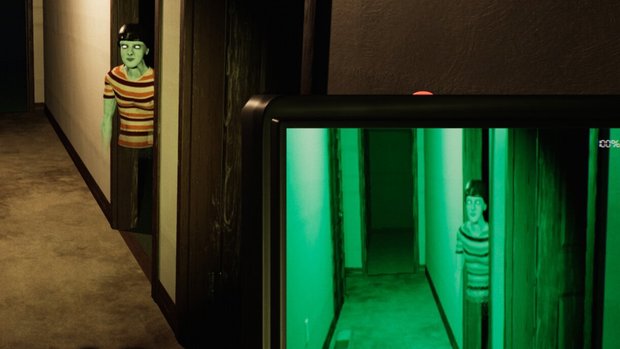
- 1 Comment
Exercise patience for a slow-burning but compelling ghost-hunting procedural
You enter the deserted house on a moonless night. The kitchen lights flicker, the temperature drops. You notice a creeping shadow in the corner of your eye. A rasping voice behind you pleads “Help me!” You turn around; the kitchen is empty. An old wedding photo in the middle of the floor catches your attention. You pick it up; it’s emanating a strange energy. There’s a name written on the back. You speak it out loud. A glowing orb appears. You reason with it, and thus sever the ties keeping it on our mortal plane. The orb glows, the faint image of a man appears in the middle, then the light grows too bright before it vanishes, taking the spirit to whatever’s on the other side.
This is the familiar premise for dealing with lost spirits still bound to their earthly existence, right? Ah, if only Conrad Stevenson’s Paranormal P.I. were that simple… This ghost-hunting simulator by D&A Studios is a very procedural game. If you hope to have any chance of encountering beings from the beyond, you will have to figure out the correct order of all necessary steps. You have to be meticulous, but also repetitious; there’s so much to do and so much going on, you will be tempted to skip ahead in your to-do list, but you won’t garner any results that way – or it will take hours longer than when you follow the rules of gameplay. It’s a tricky balance between realism and fun.
Your reaction to that paragraph is probably a strong indicator of whether this game is for you. It’s very well done and time will fly for patient gamers with a keen interest in paranormal phenomena as they explore the darkened rooms of haunted houses, but if you’re looking for more action and a brisker pace, the complexity and slow goings might frustrate you so much that your wrath would do a poltergeist proud.

You are the titular Conrad Stevenson, and have set up your office in the (fictional) city of New Eidolon as a private investigator of the paranormal. The game is split up into a series of standalone cases, and any starts with research in your office. You will receive an email from the current residents of a particular haunted house, which works as a witness report, detailing what kind of phenomena they have seen or heard and in which room it occurred. You first need to figure out where you’re going, what witnesses say you can expect to find there, and what has happened in the past that might explain the existence of such supernatural disturbances. There are five locations to explore – from residential homes to a church with surrounding cemetery and woods, and even a lighthouse – with 28 haunting spirits divided among them. Lots of busting to do!
The strength of Conrad Stevenson’s Paranormal P.I. is in immersing players in each graphically realistic setting and discovering the ghosts' backstories to help them “move on.” You’ll find some background information about the locations on Wiki-pages on your office computer, together with a couple of documents in a digital archive, like architectural plans or a list of property ownership throughout the decades, giving you a first clue to the identity of the spirits that might be lingering (there are multiple ghosts per location). It will also display empty spots indicating how much stuff is left to find on-site.
Important information is highlighted on the computer screens, which you can add to your in-game notebook by clicking on it. You only have space for six items in that notebook at a time, though, so you need to choose carefully which details you want to concentrate on. There are general statements like “renovations will stir up paranormal activity” or “many families provide many memories,” as well as specific information like “footsteps in the hallway” or “a disembodied voice in the kitchen.” The combination of notes you choose will define what kind of ghostly activity you will encounter during your next investigation. The archive will grow as you uncover more documents on-site, such as newspaper clippings or old photos, but you’ll have to return to your office to add them to your notebook.
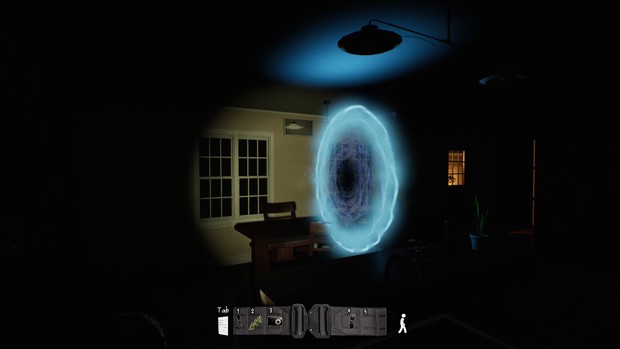
When it’s time to hit the field, your goal is to record evidence of otherworldly activity with your equipment, then track down each ghost’s individual relic, an object that ties them to our world which you must cleanse and remove if you want the spirit to leave. However, that relic only appears after you’ve collected all other required evidence of the spirit’s presence. Even then, not all ghosts are ready to go quietly, but more on those later.
Ghost hunting is all about exploration and finding sweet spots in the environment that trigger unexplained phenomena. Each ghost type will set off certain detecting gear but won’t always influence others. The trick, at least with your initial equipment, is that you also need to be at the right place at the exact right time, with the right tools to capture their presence. And the right time can come either sooner or later depending on which steps in the overall procedures you’ve followed to that point – or not.
Conrad Stevenson’s Paranormal P.I. employs something called “map activity” – basically the level of ghost activity at a particular location. When you start exploring a haunted house, the map activity is low, triggered only by the information from witness reports and archives you copied in your notebook. You have to raise the activity level by finding cold snaps and electromagnetic impulses in order to catch more abnormal sounds and whispering voices, and subsequently visual proof of the ghosts’ presence. Unfortunately, if you leave for your office and return later, the map activity will have been reset and you’ll have to start over. And you’ll probably want to on occasion, in order to change the info in your notebook, altering which ghosts’ activity will be more present back at the haunting site.
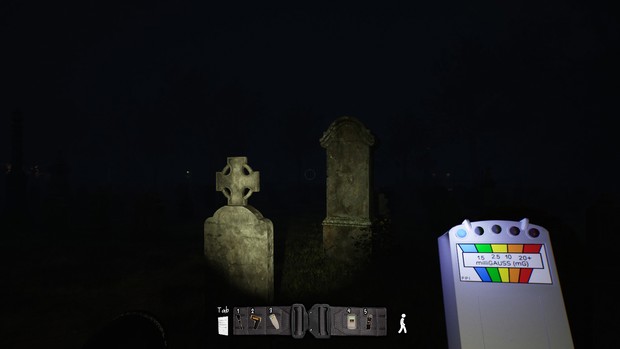
With so many ghosts to track, it’s helpful if luck is on your side. Pursuing a particular ghost according to the details in your notebook will cause it to manifest more often in places you’re expecting, giving you the best chance to capture evidence of it. However, you can still encounter other spirits present in that location, even accidentally, though they don’t appear as often, and of course you’ll need to have the correct equipment on hand to record it. Because your chances of success are reduced that way, it’s best not to rely on random chance and instead be more strategic about your choice of leads, even if it means a few extra trips back to the office to achieve it.
Along with a standard flashlight, you have typical ghost-hunting gear at your disposal. There’s the milligauss meter to detect electromagnetic fields (EMF – and fun fact, this meter is also used as the game’s loading icon), a thermometer to catch sudden cold snaps, a recorder to capture sounds and voices from beyond, and a camera to take photos. You can pull them out with the corresponding hotkey, or scroll through them with the mouse wheel. With the exception of your flashlight, you can only use one device at a time and carry a maximum of four other items on your belt, so you’ll often find yourself returning to your van to switch equipment. Some of this equipment runs on batteries, which you can theoretically deplete and have to replace them back at the van, but in all my time in New Eidolon, I never had to change a single one.
This limited inventory might be realistic but it can also be very frustrating, especially on larger maps. After a while, at the start of each investigation I ended up running back and forth between the van and a more central location on the map to drop all equipment there for a quicker transferral before actively starting my investigation. Alternatively, you could make use of the save system as a time-saving hack. There is no manual save function but your progress is recorded automatically whenever you quit. Leave the game at your office and you’ll begin there when you return, but exit during an on-site investigation and you always return to your van when you come back, even if you were all the way on the other side of the map when you left, making it easy to swap out equipment and resume.
Capturing evidence earns you experience points, which you can spend on more advanced equipment like a parabolic microphone to capture sound from a distance, or an automatic camera to keep digital eyes on one room while you personally explore others. The latter is a very valuable piece of equipment well worth saving up for, since it (almost completely) does away with “waiting game” frustrations – but only if set up in the right position, of course! When picking up from an earlier play session on-site, the game remembers what kinds of activity you’ve already discovered during that particular investigation, and what equipment you were carrying at the time, but any equipment you’ve installed to work on its own will be gone and waiting back in the van.
There are different types of ghosts, and each takes a slightly different approach to catch. You have your residual ghosts; nothing more than remnants of people, lingering memories that haunt a place but won’t respond to you directly. They can be easily dispelled. A more intelligent variety of this kind is similar, except they take notice of your presence and will even try to communicate. A more sinister sort of intelligent ghosts are the shadow people, who will envelop a location in an eerie, disorienting black mist when you try to dispel them, making it harder to find their essence. They won’t talk back to you, either. Next are poltergeists, which have ties with other ghosts that must be severed before you can get rid of them. Finally, there are demons, malevolent entities that can actually attack you if you don’t keep your distance or fail an exorcism.
Once you’ve got the necessary relic to dispel a ghost, you must search around for its essence with a “smudge stick” that burns brightest when the entity is near, allowing you to summon and potentially converse with it to persuade it to leave. Poltergeists are a bit different; since they absorb energy from the other spirits, you can only release them last in a given haunted location. Demons call for a much different tactic involving scrolls and hidden runes to determine their true names, and a circle of salt to keep them at bay. If a demon touches you, the batteries of any equipment you’re using at that time will immediately be depleted and you’ll “forget” a piece of evidence you acquired, effectively lowering the overall map activity again. There’s no defense other than running away, which should be your natural instinct, since they are huge and appropriately scary! Easy when you’re out in the open; not so much when you’re confined indoors.
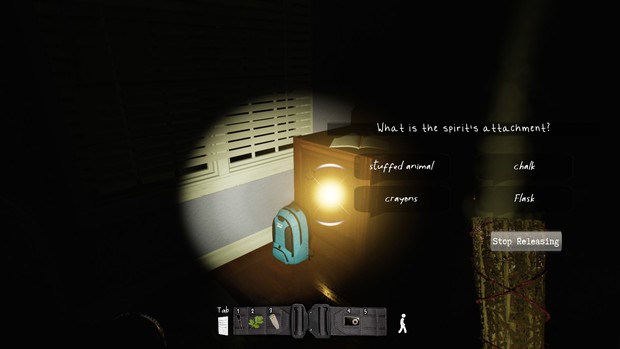
An extensive description of all ghost types is available on the in-game Wiki-pages of your office computer, as well as information about the equipment you can use to detect them. It’s a lot to absorb, but reading through it all is essential to figuring out the necessary steps in the ghost-hunting procedures. You have to compile your own step-by-step list of actions for a successful exorcism, which might take you quite a while to figure out – and you better remember it under duress, as you can’t look up this information when you’re in the field.
What I enjoyed very much about Conrad Stevenson's Paranormal P.I. is that you can freely move around the available 3D locations in a first-person viewpoint, instead of the slideshow style movement in Darkling Room’s similar games like Dark Fall and Incubus. And some of these locations are pretty huge! When you can interact with something, a hand icon appears on top of it, like a door you can open or a light switch you can flick. You then have to match the screen’s center cursor with it before tapping the interact button will take effect, which is a bit cumbersome at times.
Turning lights on is a good way to get reactions from ghosts, but it’s more fun to leave them off and roam the darkness of the house with your flashlight. You can really freak yourself out trying to imagine what might be lurking just outside that small beam of light. You never know when you might stumble upon an animated shadow or even what appears to be a fully manifested human being staring at you with its dead eyes. The ghost designs are more cartoony in nature, like 3D animated characters in some generic Nickelodeon show, and look a little out of place in an otherwise very realistic setting, but their slow movements and uncanny appearance can certainly chill your bones. Especially when they’re responsible for a jump scare or two, suddenly appearing from around a corner or even walking straight through you from behind.
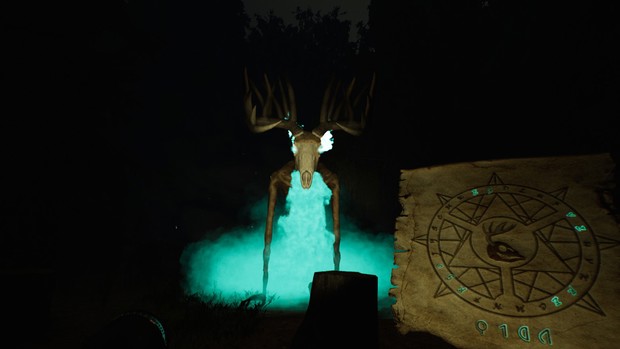
After starting with a couple of standard (albeit haunted) residential homes, you’re sent to Spruce Street with its church, a mausoleum, a huge cemetery and an expansive forest. The entire area is deserted, other than the ghostly presences, and in this vastness you feel tiny and very much alone. A nice touch, however, is the occasional car you can see driving by in the distance, reminding you there is indeed a civilized world out there. You spend a lot of time outdoors for this case, with street lights barely illuminating the night, angel statues daring you to blink, and deer suddenly dashing in front of you when you’re trying to find your way through a maze of trees, where every swaying branch or hooting owl could be a potential specter. You may be the ghost hunter, but the atmosphere is so creepy it’s hard not to feel like the hunted.
As eerily realistic as the graphics are, sound is probably the most important aspect of Conrad Stevenson’s Paranormal P.I. Wearing headphones is strongly advised to limit the chance of missing something. This is definitely not a game for people with hearing problems. You’ll hear ghosts walking up and down stairs, crying or coughing, wailing or muttering to themselves, or even literally shouting for you to get out or to keep quiet. They can flick light switches, close and open doors, and play the piano, among other things. Poltergeists especially are very noisy and will throw stuff around: glass will shatter, cutlery will clatter, boxes and jerry cans will bang against walls or drop off shelves. But the houses have normal sounds as well, like a ticking clock, the heating system or air conditioning turning on, and crickets chirping in the backyard.
There’s also the accompanying voice of Conrad himself, letting you know if what you’ve found is worthwhile or not. His voice actor sounds pretty laid back, and I found his North American accent very soothing. I was always extremely on edge and tensely awaiting activity from the ghosts, and his words relaxed me a bit. He helpfully comments on the evidence you uncover, but he won’t respond to the random sounds, leaving you as the player to recognize them for what they are.
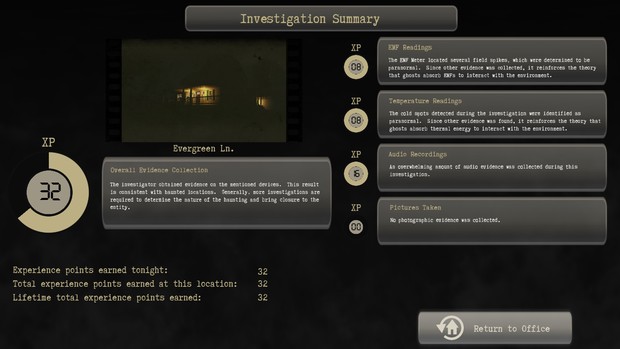
The ghosts that can communicate may provide hints as to who they were, what happened to them and why they are haunting the place. You can ask them a variety of questions, like their names or why they are here. The ghostly voices are sometimes hard to understand, but each of them is unique to its respective character: male, female, young, old, evil spirit and demon; there’s even a French ghost, as well as an indigenous (former) person. If you need a refresher of what’s been said, there’s an option to play back all recordings on your office computer, where you can even slow down the track speed.
There is some subtitling, such as when you ask the ghosts specific questions, but not for the random sounds and voices you need to pick up on yourself. That’s why the only music you will hear in this game comes from a television set and a sound box in the entry hall to your office (the latter you can turn on and off yourself), and a spooky jingle during the evaluation screen after an investigation, tallying your acquired experience points. Otherwise your surroundings are silent as you wait for things to go boo, which is effectively creepy. Every little noise will become a potential ghost sign in your ears. Play long enough and you’ll start to be scared of your own footsteps.
The moment you catch yourself competing with an invisible presence for control of the pull string of a basement light while trying to get it to reply to your questions, it’s clear there’s a very human aspect to Conrad Stevenson’s Paranormal P.I. Yes, the majority of the gameplay centers on the ghost-hunting simulation, but it changes into an actual adventure game when you start learning more about the lives these deceased led.
This is where the narrative aspect comes into play. Walking around with an EMF meter and thermometer is fun, but discovering a ghost’s personal details and choosing what to say to them from four possible answers to encourage them to move on offers a level of deductive puzzling that lifts this game to the next level. It’s that little switch inside your head going from “hunting ghosts” to “helping lost souls” that makes you appreciate the true objective here. There are lots of different stories you have to piece together, and most of them aren’t pretty, involving murders, suicides, illnesses and other violent deaths that make you wish you could go back in time and save these victims. Being able to give them eternal peace instead is very rewarding, and aiming for that closure is exactly what makes the game so addictive.
The first haunted house I visited contained four different entities and it took me six hours to clear the place. However, most of that time was spent trying to figure out the game’s inner workings and reading through all the in-game Wiki-pages and tutorials. It’s only because I knew beforehand that it would be a huge, time-consuming game that I kept at it, but I’m really glad I did. It took me almost 30 hours to face my first demon, and anyone determined to see every case through to the end can expect close to 50 hours in total. I can’t remember any other game that kept me occupied for that long – for a single playthrough! While it sure started slow and several of those hours were frustrating, with patience I ended up quite enjoying most of the rest.
Final Verdict
Thankfully, with all the “how to play” research out of the way, I spent hours investigating each new haunt without noticing how much time was flying by. Yet even after knowing how everything worked, the second location took me even two hours longer to finish! That was okay, though, because even in all the quiet, slow-burn moments I had a constant feeling of excitement, jumping at every sound and physical manifestation as I tried to capture evidence of paranormal phenomena. And it was my curiosity about the deceased I was “hunting,” and of course the anticipation of actually seeing the spirits in person, that kept me glued to my screen as if it were my own personal ghost relic. It’s an acquired taste, even with the right expectations, but persevere beyond its daunting start and Conrad Stevenson’s Paranormal P.I. becomes a thoroughly compelling procedural with a very real human element, even if most of those humans are no longer alive.
Hot take
Conrad Stevenson’s Paranormal P.I. forces you to be patient and follow procedures to the letter, but once you get the hang of exploring haunted environs in search of ghosts, figuring out whose spirit is still lingering and finding the right way to get them to move on can be highly rewarding.
Pros
- Dark, realistic settings enveloped by eerie sounds thoroughly creeps you out
- You’re not just hunting ghosts but learning who these people were when still alive
- Simulated use of special investigative equipment is fun and suspenseful
Cons
- Very slow start with a lot to learn
- Balancing limited inventory can get frustrating
Johnny played Conrad Stevenson’s Paranormal P.I. on PC using a review code provided by the game’s publisher.


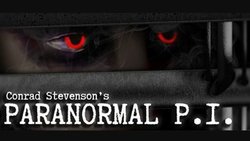
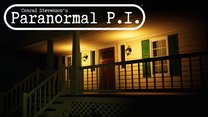
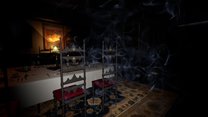






1 Comment
Want to join the discussion? Leave a comment as guest, sign in or register in our forums.
A detailed examination of Conrad Stevenson's Paranormal P.I.'s meticulous gameplay and immersive atmosphere
Reply
Leave a comment